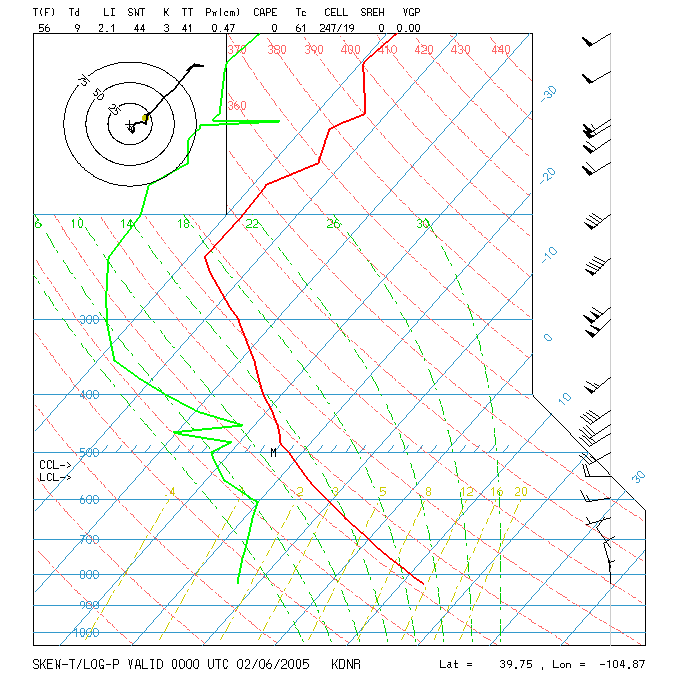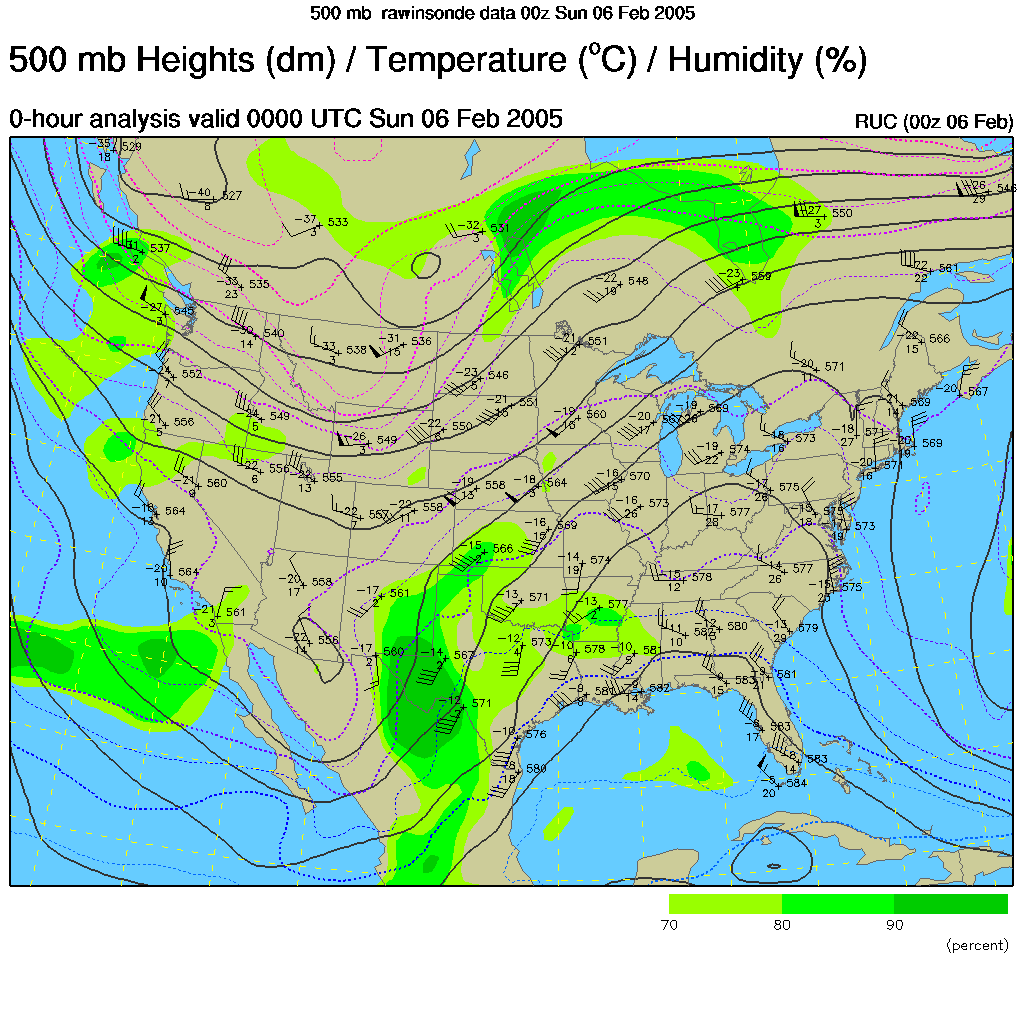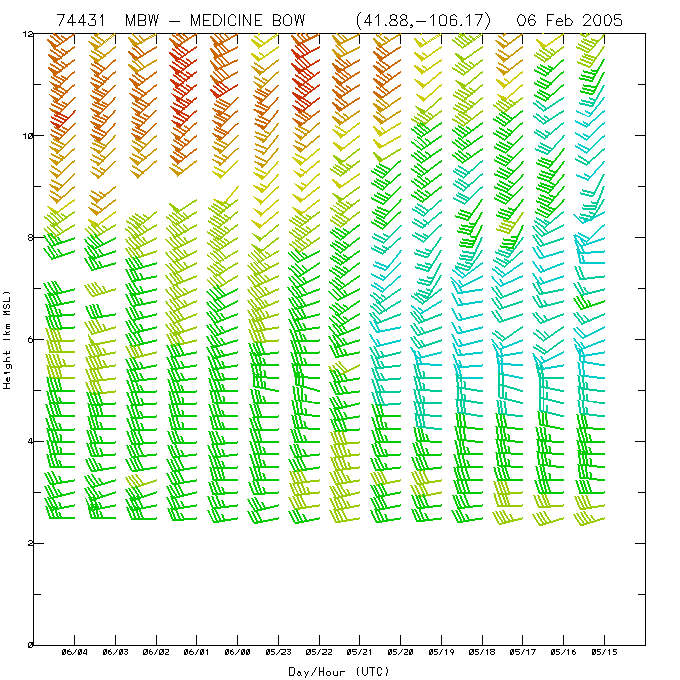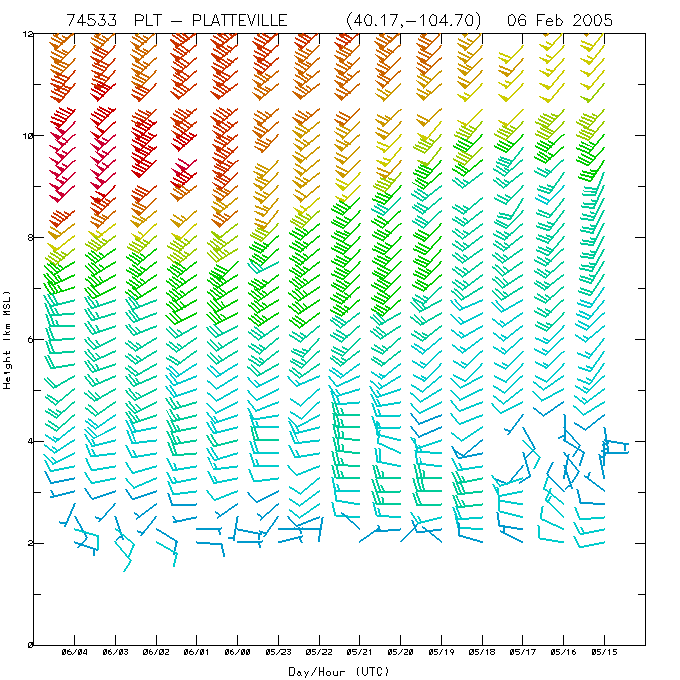Kelvin-Helmholtz Instability
February 5, 2005

The picture was taken around sunset from near the top of Greyrock (El. ~7600 ft). The view is looking southeast over Fort Collins and the Plains. Other mountain wave activity was evident at the time. Kelvin-Helmholtz instability is caused by two factors: vertical wind shear and static stability. The static stability is the resistance of the atmosphere to vertical motions. Vertical wind shear (wind speed or direction changing with height) tends to shear a given layer in different directions. When a layer is both statically stable and sheared, an interesting instability can result in which the flow across the layer breaks down into a series of turbulent rolls oriented perpendicular to the wind shear vector. This is Kelvin Helmholtz instability. Below are some maps and analyses for around the time that these rolls were observed.





Home | About this Site | Disclaimer || Site Map | Subscribe to be notified when new content is posted to this site
|
Home | About this Site | Disclaimer || Site Map | Subscribe to be notified when new content is posted to this site
|